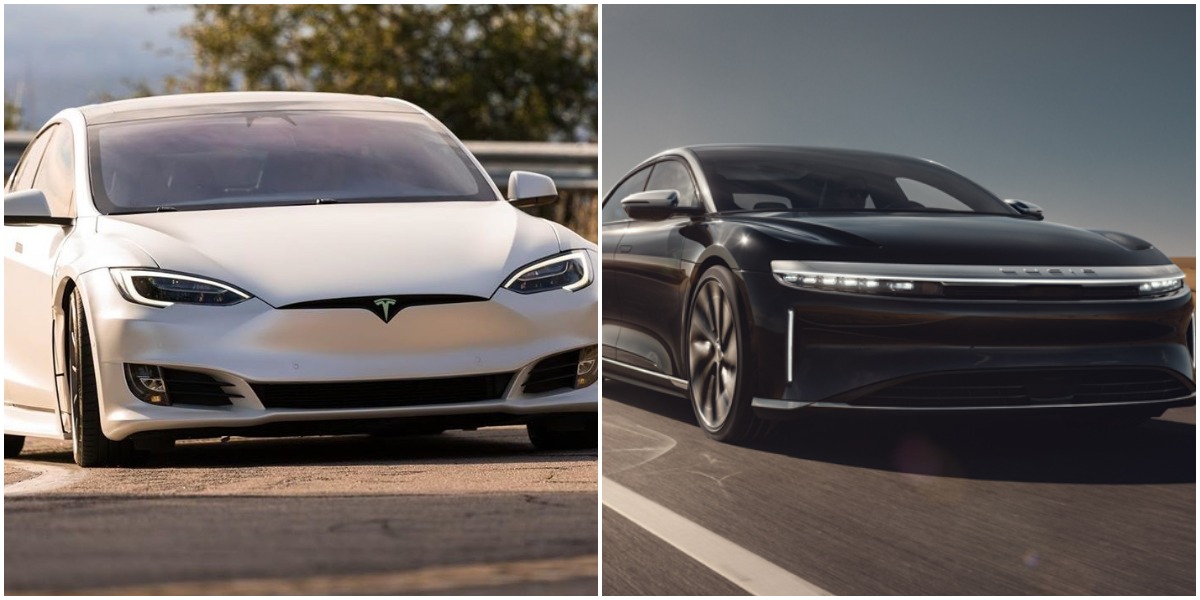
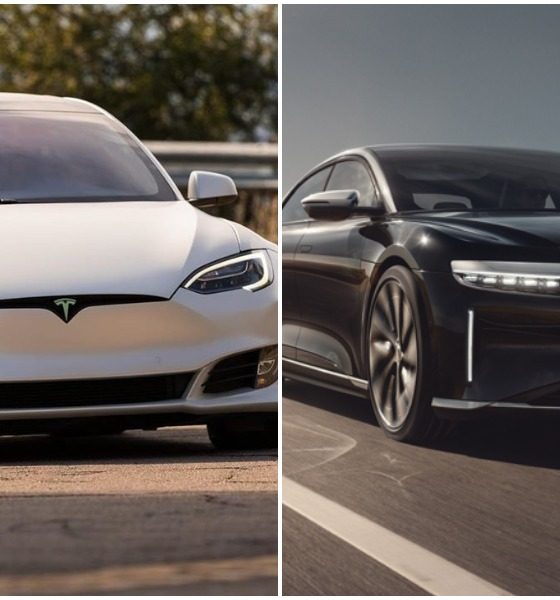
News
Why Tesla shouldn’t worry about Lucid’s 517-mile range
The Tesla Model S is no longer the highest estimated range EV on the market, and the Lucid Air is. After the latter company revealed that the Air, its first model, has an EPA-estimated range of 517 miles, it opened doors for Lucid to become a real player in the transition to sustainable passenger transportation.
However, Tesla still has a few significant advantages in the field despite the Model S losing the title of “best range on an EV,” because the company has a few things that Lucid does not.
Here are a few things to remember.
The Model S still has over 400 miles of range
Despite not having 517 miles of EV range, the Model S still has an impressive 402-mile rating per charge based on EPA estimates. The Long Range Plus variant has done wonders for EV competition and has solidified Tesla’s position as the leader in electric car development. It is important to note that Tesla’s flagship sedan still is the only currently available vehicle with at least 400 miles of range, making it a prize all on its own for anyone who wants to forget about range anxiety altogether completely.
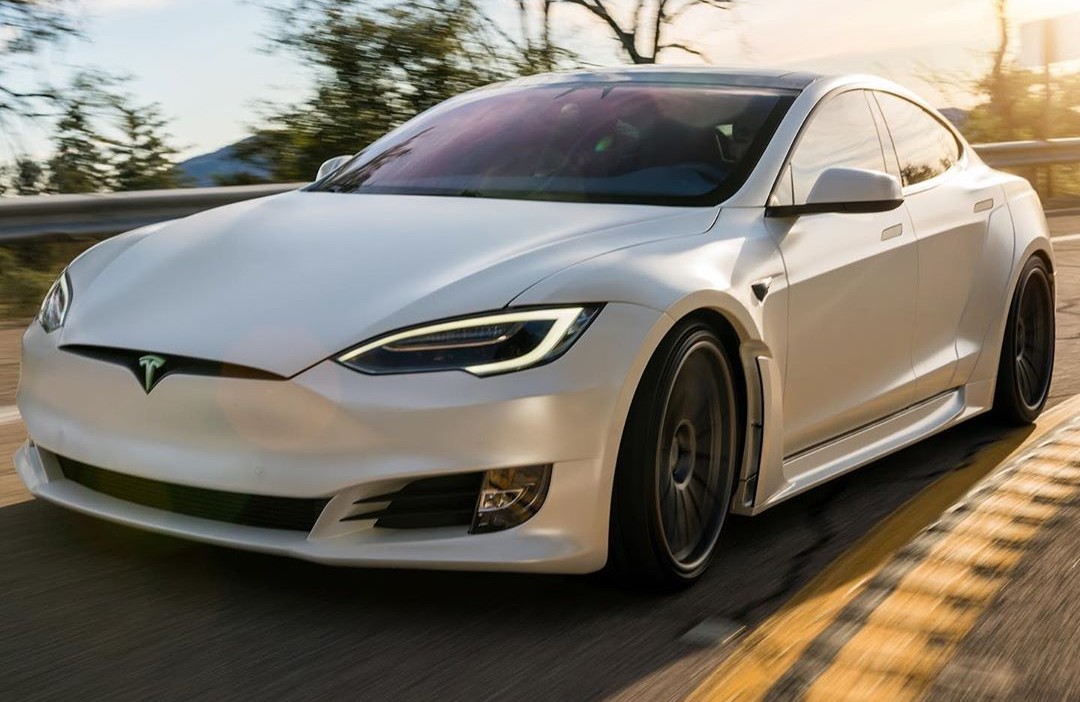
Battery Day is only a little over a month away
Tesla’s Battery Day is September 22, so there are plenty of things to speculate about for the event. Tesla may unveil its million-mile capable battery pack at the event. But even further, the company has been working on several other developments that are geared toward using more responsible battery materials and getting rid of the controversial cobalt that is used in cells now. Regardless of what is revealed on September 22, it will likely be a response to what Lucid showed the world today. Elon is a master of responding to Tesla’s competitors.
Consumers don’t “need” 500+ miles of range
500+ miles of range is unheard of in the EV community, but it does not mean that consumers are going to flock to a vehicle that offers that capability. With higher range usually comes higher kWh battery packs, which frequently means more money. The details of the battery pack are not known and will likely be revealed at the company’s unveiling event on September 9. Lucid CEO Peter Rawlinson did state that the Air will have a 900-volt architecture.
However, consumers do not need 500 miles of range. Very few people require that amount of range for a typical commute to work and even cross country drives, which are rare, to begin with, don’t need this much range. The EV charging infrastructure has grown exponentially in the past few years, and charging stations are standard along popular routes of travel. If anything, the range is a luxury that will ease the minds of some owners.
Sam Abuelsamid, a principal analyst for Guidehouse Insights, stated that customers tend to buy cars that have functions that are not needed.
“Car buyers are not rational and never have been. Thus automakers are scrambling to build 300+ mile EVs because consumers say they want to go anywhere, anytime. How many people do you know that have ever actually driven across the country?” he said, according to Green Car Reports.
Tesla still has the lead in terms of EV development as a whole
Two sedans, one SUV, one crossover, a pickup, a Supercar, and a Semi: Those are all of the things Tesla is selling or is developing. The company has a lot to offer consumers because it has equipped itself with vehicles that fit every body style and description. Now, the company is building two new Gigafactories, one in Germany and one in Texas to keep up with increasing demand. Meanwhile, Lucid is still a new player on the block, and it has a long way to go in vehicle development, especially if it expects to keep up with Tesla’s momentum in the sector.
Tesla’s Lineup of Model S, Model X, Model 3, and Model Y. (Credit: Tesla.com)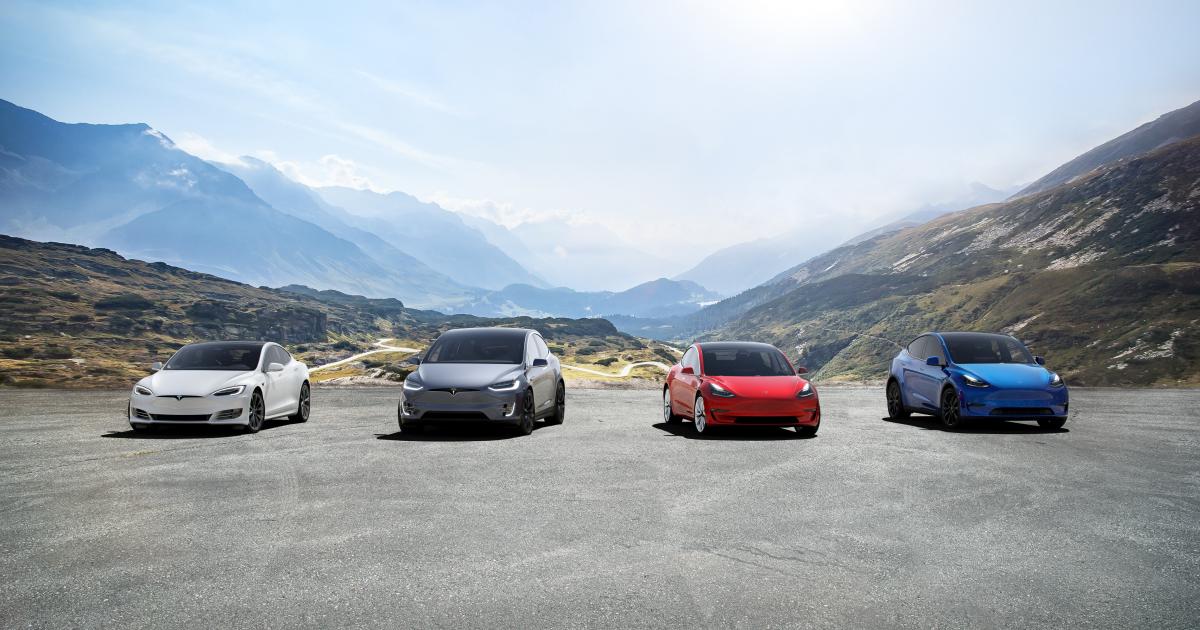
Lucid’s 517-mile capable Air will undoubtedly drive competition in the electric vehicle market to levels that it has not seen before. When electric vehicles were first being introduced, range ratings of 100 miles or less were somewhat standard. Tesla’s focus on range and performance through high-grade battery development changed the EV sector altogether and set a standard for the industry as a whole. Now, companies are stepping up their game to match and surpass other automakers, which is what is going on with Lucid.
However, Tesla will likely have a rebuttal for this range rating, and it could come as soon as September 22. There is not much for Elon Musk’s company to worry about right now; it still holds an advantage over anyone and everyone who makes electric cars.

Investor's Corner
Tesla gets bold Robotaxi prediction from Wall Street firm
Last week, Andrew Percoco took over Tesla analysis for Morgan Stanley from Adam Jonas, who covered the stock for years. Percoco seems to be less optimistic and bullish on Tesla shares, while still being fair and balanced in his analysis.
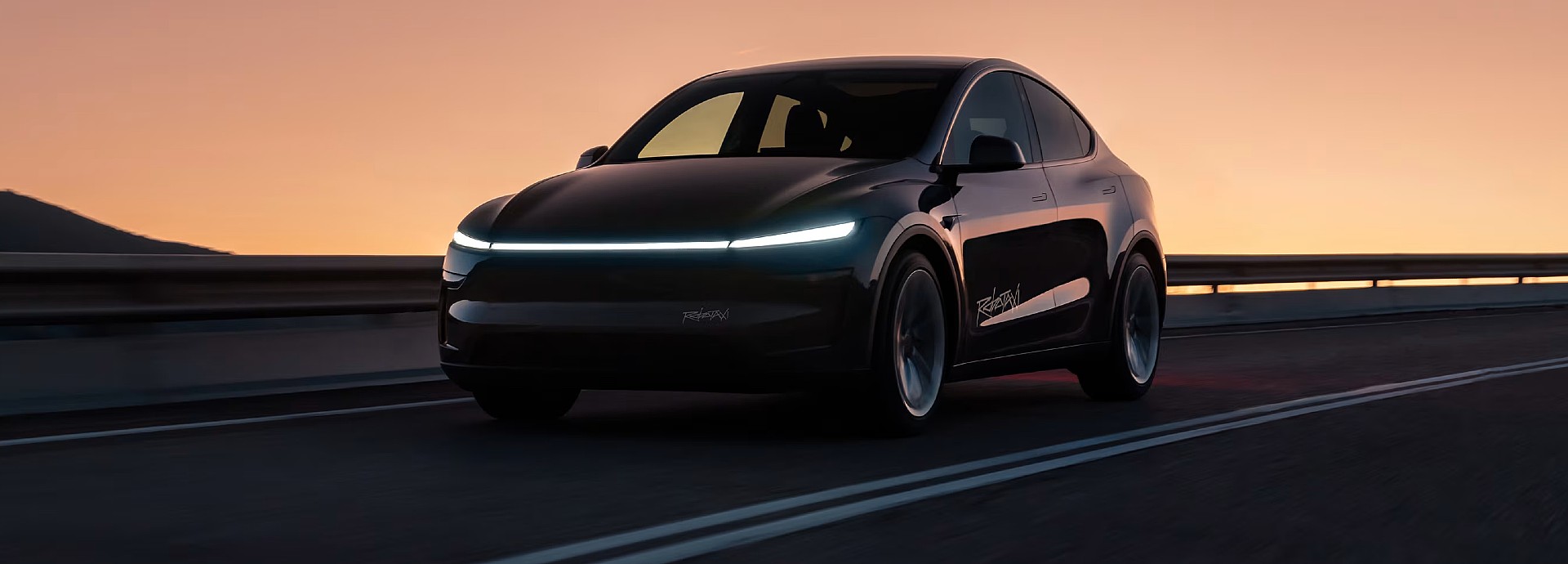
Tesla (NASDAQ: TSLA) received a bold Robotaxi prediction from Morgan Stanley, which anticipates a dramatic increase in the size of the company’s autonomous ride-hailing suite in the coming years.
Last week, Andrew Percoco took over Tesla analysis for Morgan Stanley from Adam Jonas, who covered the stock for years. Percoco seems to be less optimistic and bullish on Tesla shares, while still being fair and balanced in his analysis.
Percoco dug into the Robotaxi fleet and its expansion in the coming years in his latest note, released on Tuesday. The firm expects Tesla to increase the Robotaxi fleet size to 1,000 vehicles in 2026. However, that’s small-scale compared to what they expect from Tesla in a decade.
Tesla expands Robotaxi app access once again, this time on a global scale
By 2035, Morgan Stanley believes there will be one million Robotaxis on the road across multiple cities, a major jump and a considerable fleet size. We assume this means the fleet of vehicles Tesla will operate internally, and not including passenger-owned vehicles that could be added through software updates.
He also listed three specific catalysts that investors should pay attention to, as these will represent the company being on track to achieve its Robotaxi dreams:
- Opening Robotaxi to the public without a Safety Monitor. Timing is unclear, but it appears that Tesla is getting closer by the day.
- Improvement in safety metrics without the Safety Monitor. Tesla’s ability to improve its safety metrics as it scales miles driven without the Safety Monitor is imperative as it looks to scale in new states and cities in 2026.
- Cybercab start of production, targeted for April 2026. Tesla’s Cybercab is a purpose-built vehicle (no steering wheel or pedals, only two seats) that is expected to be produced through its state-of-the-art unboxed manufacturing process, offering further cost reductions and thus accelerating adoption over time.
Robotaxi stands to be one of Tesla’s most significant revenue contributors, especially as the company plans to continue expanding its ride-hailing service across the world in the coming years.
Its current deployment strategy is controlled and conservative to avoid any drastic and potentially program-ruining incidents.
So far, the program, which is active in Austin and the California Bay Area, has been widely successful.
News
Tesla Model Y L is gaining momentum in China’s premium segment
This suggests that the addition of the Model Y L to Tesla China’s lineup will not result in a case of cannibalization, but a possible case of “premiumization” instead.
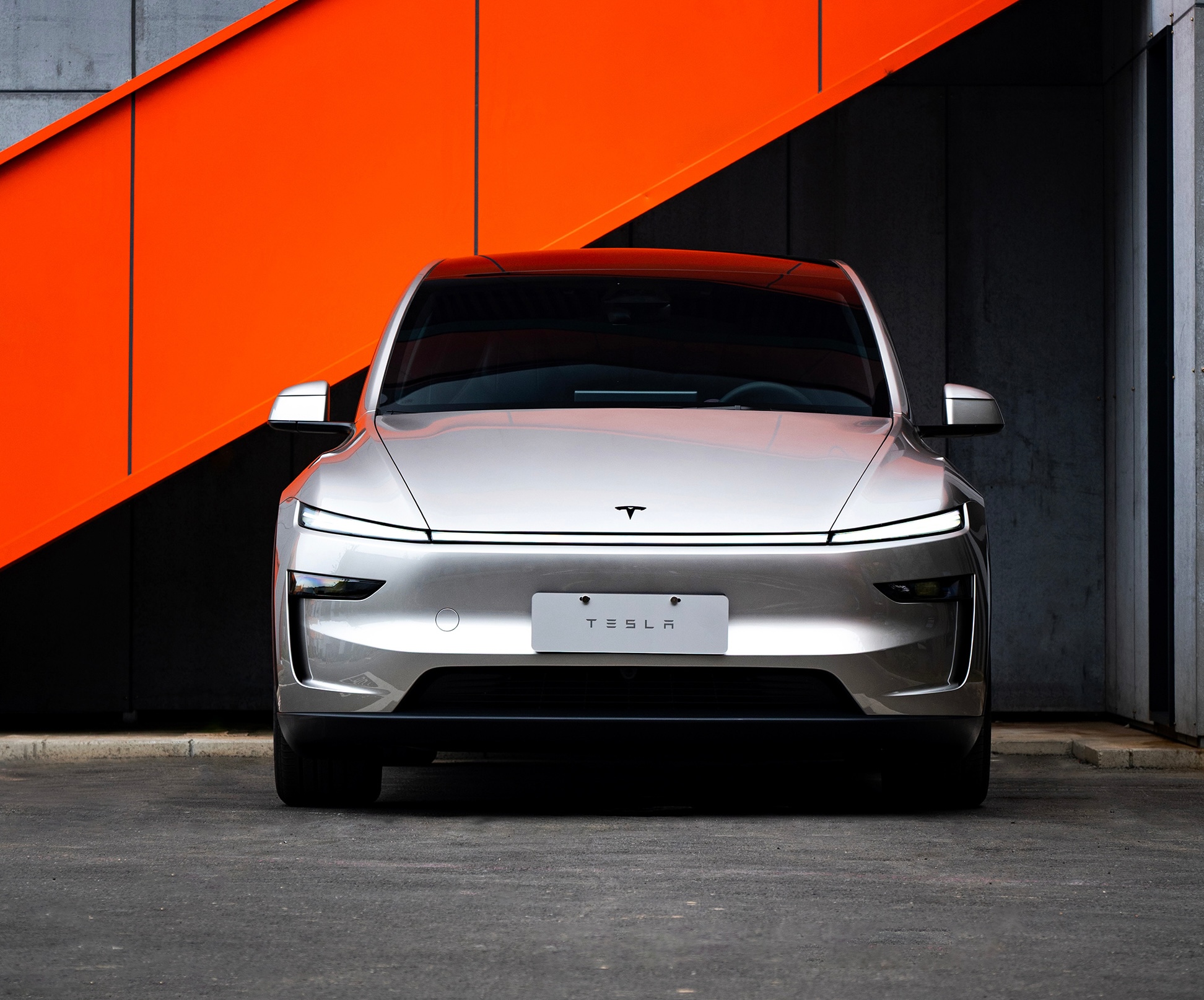
Tesla’s domestic sales in China held steady in November with around 73,000 units delivered, but a closer look at the Model Y L’s numbers hints at an emerging shift towards pricier variants that could very well be boosting average selling prices and margins.
This suggests that the addition of the Model Y L to Tesla China’s lineup will not result in a case of cannibalization, but a possible case of “premiumization” instead.
Tesla China’s November domestic numbers
Data from the a Passenger Car Association (CPCA) indicated that Tesla China saw domestic deliveries of about 73,000 vehicles in November 2025. This number included 34,000 standard Model Y units, 26,000 Model 3 units, and 13,000 Model Y L units, as per industry watchers.
This means that the Model Y L accounted for roughly 27% of Tesla China’s total Model Y sales, despite the variant carrying a ~28% premium over the base RWD Model Y that is estimated to have dominated last year’s mix.
As per industry watcher @TSLAFanMtl, this suggests that Tesla China’s sales have moved towards more premium variants this year. Thus, direct year-over-year sales comparisons might miss the bigger picture. This is true even for the regular Model Y, as another premium trim, the Long Range RWD variant, was also added to the lineup this 2025.
November 2025 momentum
While Tesla China’s overall sales this year have seen challenges, the Model Y and Model 3 have remained strong sellers in the country. This is especially impressive as the Model Y and Model 3 are premium-priced vehicles, and they compete in the world’s most competitive electric vehicle market. Tesla China is also yet to roll out the latest capabilities of FSD in China, which means that its vehicles in the country could not tap into their latest capabilities yet.
Aggregated results from November suggest that the Tesla Model Y took the crown as China’s #1 best-selling SUV during the month, with roughly 34,000 deliveries. With the Model Y L, this number is even higher. The Tesla Model 3 also had a stellar month, seeing 25,700 deliveries during November 2025.
Cybertruck
Tesla Cybertruck earns IIHS Top Safety Pick+ award
To commemorate the accolade, the official Cybertruck account celebrated the milestone on X.

The Tesla Cybertruck has achieved the Insurance Institute for Highway Safety’s (IIHS) highest honor, earning a Top Safety Pick+ rating for 2025 models built after April 2025.
The full-size electric pickup truck’s safety rating is partly due to the vehicle’s strong performance in updated crash tests, superior front crash prevention, and effective headlights, among other factors. To commemorate the accolade, the official Cybertruck account celebrated the milestone on X.
Cybertruck’s IIHS rating
As per the IIHS, beginning with 2025 Cybertruck models built after April 2025, changes were made to the front underbody structure and footwell to improve occupant safety in driver-side and passenger-side small overlap front crashes. The moderate overlap front test earned a good rating, and the updated side impact test also received stellar marks.
The Cybertruck’s front crash prevention earned a good rating in pedestrian scenarios, with the standard Collision Avoidance Assist avoiding collisions in day and night tests across child, adult crossing, and parallel paths. Headlights with high-beam assist compensated for limitations, contributing to the top award.
Safest and most autonomous pickup
The Cybertruck is one of only two full-size pickups to receive the IIHS’ Top Safety Pick + rating. It is also the only one equipped with advanced self-driving features via Tesla’s Full Self-Driving (Supervised) system. Thanks to FSD, the Cybertruck can navigate inner city streets and highways on its own with minimal supervision, adding a layer of safety beyond passive crash protection.
Community reactions poured in, with users praising the vehicle’s safety rating amidst skepticism from critics. Tesla itself highlighted this by starting its X post with a short clip of a Cybertruck critic who predicted that the vehicle will likely not pass safety tests. The only question now is, of course, if the vehicle’s Top Safety Pick+ rating from the IIHS will help the Cybertruck improve its sales.








